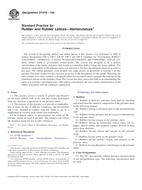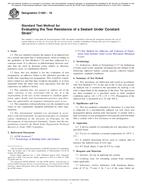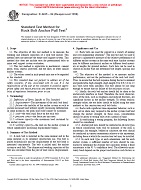1.1 These test methods cover the fracture toughness determination of K
Note 1
The terms bend(ing) and flexure are synonymous in these test methods.
1.2 These test methods determine fracture toughness values based on a force and crack length measurement (pb, sc), or a force measurement and an inferred crack length (vb). In general, the fracture toughness is determined from maximum force. Applied force and displacement or an alternative (for example, time) are recorded for the pb test specimen and vb test specimen.
1.3 These test methods are applicable to materials with either flat or with rising R-curves. The fracture toughness measured from stable crack extension may be different than that measured from unstable crack extension. This difference may be more pronounced for materials exhibiting a rising R-curve.
Note 2
One difference between the procedures in these test methods and test methods such as Test Method E 399, which measure fracture toughness, K
1.4 These test methods give fracture toughness values, K
1.5 These test methods are intended primarily for use with advanced ceramics which are macroscopically homogeneous. Certain whisker- or particle-reinforced ceramics may also meet the macroscopic behavior assumptions.
1.6 These test methods are divided into three major parts and related sub parts as shown below. The first major part is the main body and provides general information on the test methods described, the applicability to materials comparison and qualification, and requirements and recommendations for fracture toughness testing. The second major part is composed of annexes that provide procedures, test specimen design, precracking, testing, and data analysis for each method. Annex A1 describes suggested test fixtures, Annex A2 describes the pb method, Annex A3 describes the sc method, and Annex A4 describes the vb method. The third major part consists of three appendices detailing issues related to the fractography and precracking used for the sc method.
1.7 Values expressed in these test methods are in accordance with the International System of Units (SI) and Practice E 380.
This standard does not purport to address all of the safety concerns, if any, associated with its use. It is the responsibility of the user of this standard to establish appropriate safety and health practices and determine the applicability of regulatory limitations prior to use.
Product Details
- Published:
- 02/01/2007
- Number of Pages:
- 34
- File Size:
- 1 file , 920 KB
- Redline File Size:
- 2 files , 1.7 MB


